Chinese salted egg pastry (蛋黄酥, 鹹蛋酥, Harm Tarn Soh) is an all-time favorite among the Chinese, particularly during the Mid-Autumn Festival and Chinese New Year.
It is prepared by encasing the salted egg yolk in sweetened red bean paste or lotus paste, then wrapped in the flaky Chinese pastry. It has a unique taste of the sweet paste and the salty yolk, and the ultra flaky pastry in one bite.
When you cut open the pastry and review the salted egg yolk within which resembles the shape of the moon. Therefore, this salted egg yolks pastry is served along with a variety of mooncakes during the Mid-Autumn Festival to worship the moon. The word yolk also sounds closely to prosperity in Chinese and hence become a popular delicacy during the Chinese New Year.
This salted egg yolk pastry is among one of the most traditional Chinese delicacies. I will explain in detail how to make this flaky Asian bun (pastry) in this article.
Note: It does not have a specific translation in English. You will find salted egg pastry, salted egg cake, salted egg yolk cookies. It all refers to the same.
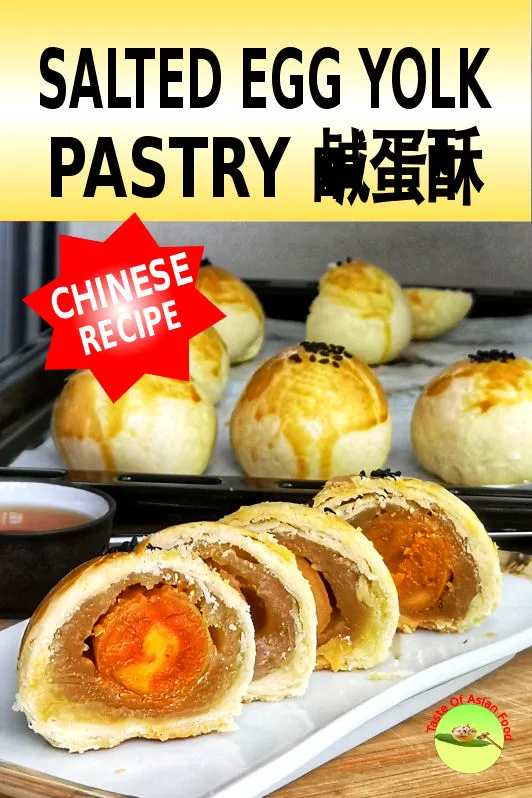
Note: This post may contain affiliate links. Please read my privacy policy for more info. I may receive commissions for purchases made through links in this post.
1. Prepare the flaky Chinese pastry 酥皮
The most challenging part (and also most rewarding) of making this dessert is to prepare the flaky Chinese pastry.
This pastry is closely related to the puff pastry. Nevertheless, the layers are separated not by pure butter, but the combination of low gluten flour and oil (either butter or lard). It tastes different from puff pastry, although the method of preparation is quite similar.
Once you master how to make the Chinese puff pastry, you will be able to make many other Chinese bakery items that required similar pastries, with some minor differences from one recipe to another.
Before we start, let me define the terminology I use in the following sections. Water dough refers to the main dough of the pastry. Oil dough refers to the mixture of flour and oil that separate the layers.
Making the water dough\
The water dough call for the combination of high gluten flour (bread flour) and low gluten flour (regular cake flour).
Why do we need both to make the water dough? The reason is to ensure to dough is stretchable while creating the layer (that is what the high gluten flour does) and yet not too tough that it will distort the shape. (That’s why to use low gluten flour to make it soft.)
The water dough will break during the process of wrapping the oil dough if it is not elastic enough. High gluten flour develops gluten during mixing, causing the water dough to become flexible and able to form a thin sheet without breakage. Otherwise, the water dough will break, and the oil dough wrapped inside will leak and destroy the layers.
However, if there is too much gluten developed, the pastry will be out of shape and unable to form a perfect sphere. That is why the use of both high and low gluten flour is critical to the success of the pastry.
Use butter to replace lard
Traditionally lard is used in this salted egg yolk pastry recipe. However, I substitute it with unsalted butter as we know that lard is not an ingredient like by everyone. Furthermore, animal fat is always deemed to be unhealthy.
Here are the steps.
- Put all the ingredients except the unsalted butter into a mixing bowl. Mix it with the dough hook of an electric mixer until the ingredients lump together. Mixing helps to form gluten, which will increase the elasticity of the dough. Please take note that the amount of water, as suggested in the recipe is only for reference. The actual amount required depends on the types of flour used. Add three-quarters of the water into the mixing bowl initially and check out the outcome. You can add the remaining water if it is too dry.
- Now add the unsalted butter. Continue mixing until the dough is shiny and smooth, just like making bread. The dough is ready when the dough hook can lift the whole dough without breakage.
- Remove from the mixing bowl. Wrap it with cling wrap and let it rest for thirty minutes.
- After resting for thirty minutes, the gluten should have well developed. The dough should be able to stretch to form a thin layer without breakage.
- Divide the dough into portions, 18g each.
The formation of gluten is an important step. You need to knead if further and rest it for another half an hour if the dough is unable to stretch into a thin layer.
Making the oil dough
Making oil dough is a straightforward process. You only need to bind the water and oil together, then knead it until it forms a smooth, soft, and shiny dough.
There are two tips to make a better oil dough- use purified butter and low gluten flour. Here is why.
Purified butter
The pastry made with unsalted butter is slightly harder than those with lard. Therefore, I have decided to use purified butter instead. Why?
Lard contains 100% fat, whereas butter has 80% fat, 15% water, and 5% milk solids. Lard is also more elastic and hence easier to mix with the flour. Therefore, the pastry made with lard has thinner and more layers.
As for the butter, the water will react with the flour to form gluten. The oil dough that has developed gluten does not mix well with the water dough, which results in a tougher pastry.
Therefore the best substitute is purified butter, which contains 100% fat. The water portion has been removed. The outcome may not be as good as lard, but it is a good alternative if you want to avoid using lard.
Low gluten flour (cake flour)
Although gluten will not form when oil and flour are mixed, there is still a small amount of water inside the flour due to humidity, especially during the rainy season. The tiny bit of gluten that form will cause the oil dough to develop some gluten which disrupts the separation of the layers during baking, and result in pastry that is less flaky than desired.
Therefore, it is best to use low protein flour for making the oil dough to avoid the slight possibility that this may happen.
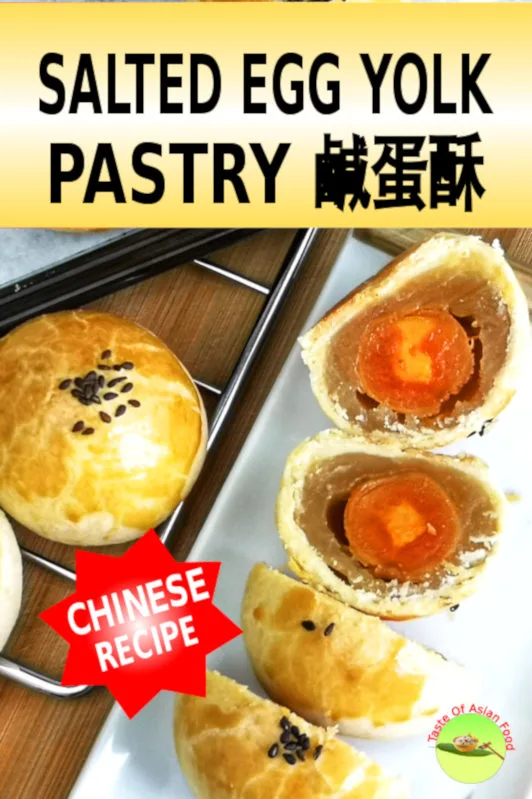
Wrap the oil dough inside the water dough
- Measure a portion of the water dough weighed 18g. Flatten it on a non-stick surface to form a circle.
- Roll out the dough with a rolling pin, with the center slightly thicker than the edge.
- Place a portion of the oil dough in the water dough and wrap it up. Make sure the water dough is completely sealed within the water dough.
- Cover it immediately with cling film once the oil dough is completely encased in the water dough. If you do not cover it, the surface of the water dough will dry out, which may crack when you roll out the dough. If it cracks, the oil dough will leak and destroy the layers.
- Keep it in the refrigerator to firm it up if it is too soft to handle.
- Roll out one portion of dough into an oblong, with the end side facing upwards. Do not roll it too thin as it may stretch and break the water dough. It should be about 5 to 8cm length for the size of the pastry in this recipe. Roll up the dough like making a Swiss roll. Then cover with cling film for fifteen minutes to let it relax.
- Roll out the dough for the second time, roll up and rest for thirty minutes.
- Repeat once more for the third time. Roll up again and keep refrigerated if you do not use it immediately.
Watch the video in this article, which shows how to make the flaky pastry.
2. Prepare the filling
Salted egg yolk
- You can use the store-bought salted egg yolks to make this pastry or use the freshly cracked salted egg.
- Crack the salted egg, use only the egg yolk. Remove the sticky layer of egg white that might stick onto the yolk by rinsing the yolk under running water. This step can remove raw/fishy smell and any egg white that is attached to the yolk.
- Pat dry the yolk with a paper towel.
- Place the salted egg yolks in a bowl. Add some corn oil sufficient to cover all the salted egg yolks. Mix well and set aside for one hour. The salted egg yolks will absorb the oil. This step is useful to create oily and yolky texture. Otherwise, the yolk will become too dry after baking.
Note: Some salted egg yolk pastry recipes suggest to bake or steam the salted egg yolk until it is half cooked before using it as the filling. To do this, bake at 180°C for 5-8 minutes, or steam it for 5-8 minutes until the yolks start to change color.
I skip this step as the raw salted egg yolk is thoroughly cooked when the pastry turns golden brown in the oven. It is not necessary
Wrap the yolk with the red bean paste (or lotus paste)
I am using the store-bought red bean paste and lotus paste, which are also used to make mooncakes. They contain sugar and oil, which is precisely identical to the red bean paste or lotus paste made from scratch.
- Divide the paste into 25g portions. Roll it with your palm to form a ball, then lightly press it to become disc shape. Place one salted egg yolk at the center and encase the yolk in it.
- Roll it between your palm until it is smooth and looks like a ball. Set aside and cover it with cling wrap at all times to avoid it from drying.
- Keep the filling in the refrigerator until it firms up so that it is easier to wrap with the pastry.
3. Wrap the filling with the dough
- Take a portion of the relaxed dough. Fold both ends of the ‘Swiss roll” together and let the smooth area of the dough facing down. By doing so, the folding line will be on top after the dough is rolled out, with the smooth surface facing down.
- Roll it out to a circle. Wrap the filling with the pastry carefully. Make sure the pastry fully encases the filling. Place the pastry with the seam side down.
- Place a piece of baking paper on the baking tray. Arrange the pastry on it.
- Let the pastry to relax for fifteen minutes before baking. Make sure to cover it with cling film to avoid drying. This step helps to prevent cracking of the pastry during baking.
- Crack an egg and separate the egg yolk from the egg white. Beat the egg yolk and apply the egg wash to the pasty with a brush. Garnish with some black sesame on top.
- Bake at 180°C/350°F at the medium rack for thirty to forty minutes.
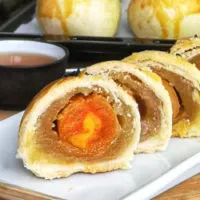
Salted Egg Yolk Pastry
Chinese salted egg yolk pastry (蛋黄酥, 鹹蛋酥, Harm Tarn Soh) is an all-time favorite among the Chinese, particularly during the Mid-Autumn Festival and Chinese New Year.
Ingredients
Water dough:(18g per portion)
- 59g high gluten flour
- 50g low gluten flour
- 10g icing sugar
- 1g salt
- 40g unsalted butter
- 55g water
Oil dough:(12g per portion)
- 90g low gluten flour
- 45g purified butter
Filling:(25g per portion)
- 250g store-bought lotus paste
- 10 salted egg yolk
- Sufficient corn oil to soak the salted egg yolk
Garnish:
- 2 egg yolks
- Black sesame
Instructions
Water dough
- Put all the ingredients for water dough except the unsalted butter into a mixing bowl. Mix until the ingredients lump together.
- Add the unsalted butter. Continue mixing until the dough until shiny and smooth.
- Divide the dough into portions, 18g each.
Oil dough
- Bind the water and oil together, then knead it until it forms a smooth, soft, and shiny dough.
Wrap the oil dough
- Roll out a portion of the water dough.
- Place a portion of the oil dough in the water dough and wrap it up.
- Cover it immediately with cling film.
- Roll out each portion, then roll up like making Swiss Toll. Then cover with cling film for fifteen minutes to let it relax.
- Repeat the Swiss Roll process two more times.
Prepare the filling
- Separate the egg yolk from the white.
- Rinse under running water. Pat dry.
- Soak the yolk with corn oil for an hour.
- Wrap the egg yolk with the lotus paste.
Baking
- Roll the pastry into a circle. Wrap the filling with the pastry carefully. Make sure the pastry fully encases the filling. Place the pastry with the seam side down.
- Apply the pastry with egg wash.
- Garnish with black sesame seeds.
- Bake at 180°C/350°F at the medium rack for thirty to forty minutes.
Recommended Products
As an Amazon Associate and member of other affiliate programs, I earn from qualifying purchases.
-
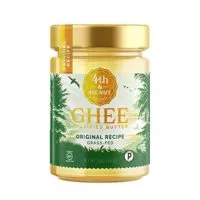 Original Grass-Fed Ghee by 4th & Heart, 16 Ounce, Pasture Raised, Non-GMO, Lactose Free, Certified Paleo, Keto-Friendly
Original Grass-Fed Ghee by 4th & Heart, 16 Ounce, Pasture Raised, Non-GMO, Lactose Free, Certified Paleo, Keto-Friendly -
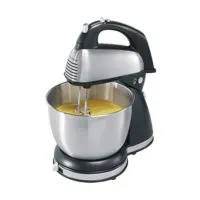 Hamilton Beach 64650 6-Speed Classic Stand Mixer, Stainless Steel, 4-Quart Bowl and Accessories
Hamilton Beach 64650 6-Speed Classic Stand Mixer, Stainless Steel, 4-Quart Bowl and Accessories -
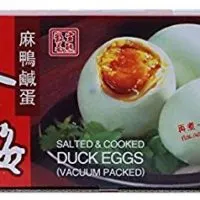 Gold Plum Salted and Cooked Duck Eggs, 8 Piece
Gold Plum Salted and Cooked Duck Eggs, 8 Piece -
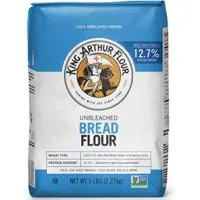 King Arthur Flour Unbleached Bread Flour, 5 Pound (Packaging May Vary)
King Arthur Flour Unbleached Bread Flour, 5 Pound (Packaging May Vary)
Nutrition Information:
Yield: 10 Serving Size: 10 pastriesAmount Per Serving: Calories: 188Total Fat: 10gSaturated Fat: 5gTrans Fat: 0gUnsaturated Fat: 4gCholesterol: 92mgSodium: 83mgCarbohydrates: 20gFiber: 1gSugar: 1gProtein: 4g
This data was provided and calculated by Nutritionix on 9/2/2019

LG
Wednesday 21st of April 2021
Hi! Mr Kwan Can I chill instead of freezing them in the fridge for 2 days before I bake them? Do I need to thaw them at room temp before baking? Will the chilling affect the flakiness of the pastry? Thank you.
KP Kwan
Wednesday 21st of April 2021
In my opinion, chilling will not affect the flakiness. You can make the pastry two days in advance, but I think should be kept in the freezer if it is longer than that.
LG
Sunday 18th of April 2021
Hi! Mr Kwan Will the pastry harden and become dense after they cool off? TIA
KP Kwan
Monday 19th of April 2021
It will be firmer after it is completely cold.
Wong Mun Yee
Sunday 15th of September 2019
I never got the free recipe book promised few years back, so I'm not clicking again.
KP Kwan
Monday 16th of September 2019
Hi Mun Yee, I have decided not to publish a cookbook that I planned. Instead, I publish all the recipe on this blog which is free for all. So far, I have posted all the recipes intended for the book on this website. I hope it is useful for you. Regards. KP Kwan
Wong Mun Yee
Friday 6th of September 2019
You used 19 salted eggs to make 10 pastries. This doesn't add up. Explain please.
KP Kwan
Sunday 8th of September 2019
Hi Wong, I have amened the typo error of 19 to 10 salted egg yolks. Thanks for pointing out the error. KP Kwan
KP Kwan
Wednesday 4th of September 2019
Hi, this is KP Kwan. I am happy to see you in this comment area, as you have read through my recipe. I am pleased to reply to any questions and comments as soon as possible.